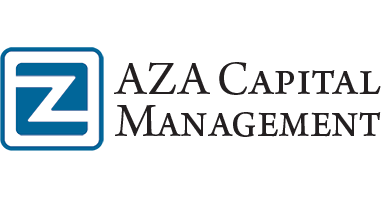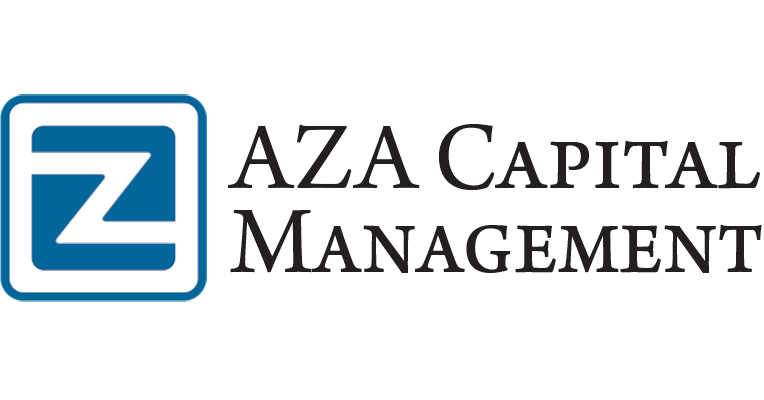Geopolitics and hard power are now moving to the forefront. In the past, we have cited the potential threat posed to the existing global economic order by the Chinese leadership and their desire to displace the West, specifically the U.S., as the dominant country in the world.
We doubt that markets have fully grasped what may result from recent events in the Ukraine. We may be witnessing the beginning of a conflagration that could involve the European theater and have significant impacts on energy and food security for the continent. While an expansion of hostilities beyond Ukraine is unlikely at this point, it isn’t something to be ignored either.
As NATO mobilizes its Very High Readiness Joint Task Force, a widening conflict could be catastrophic for the world economy and is sufficient reason for a diminution of market valuations globally. Investors should now be building in margins of safety across the board. Being aware of and prepared for low probability, high impact scenarios is crucial to investment success over time.
As we’ve written about in the past, a fragile economic and financial landscape, which is fostering recent market weakness, has been in place before Russia invaded the Ukraine. However, the conflict is poised to exacerbate the situation.
Why is Russia invading the Ukraine now?
In short, Russia’s opponents are found wanting. Vladimir Putin perceives the U.S. as weak (the exit from Afghanistan is exhibit A) and internally divided providing a multi-year window for uninterrupted operations against Europe.
Germany and Poland lack nuclear missiles or military capabilities to stop Russian armor and do not have advanced aircraft to ensure air superiority to defeat massed military formations.
Russian air and missile defense capabilities are on paper the best in the world potentially neutralizing American air supremacy of 5th Generation fighters to the point the U.S. will not risk a substantial number without its own massed forces. Russian nuclear and cyber capabilities are potentially powerful deterrents that may limit U.S. responses. Russian submarine forces have likely been let loose in the Atlantic clouding America’s ability to reinforce in strength and potentially placing strategic nuclear forces off the U.S. East Coast.
What Are Putin’s End Goals?
We believe these could be the opening moves for the restoration of the Russian Empire and his goal for the effective destruction of NATO. Though not a certainty, we believe the market is grossly underestimating Putin’s will to put NATO to the test over Poland or the Baltics. Over the next several years, Russian operations have the potential to push deep into the heart of Europe challenging NATO collective defense guarantees and providing a likely strategic disaster for Russia and Europe.
Imagining Russian forces penetrating highly-Russian-gas-dependents Germany and Italy is not beyond the realm of possibility. Let this fact sink in: In 2020, not a single brigade-sized unit in the German Bundeswehr was ready for deployment. Europe has not invested in its defense in either people or materiel. There may be no significant force to defend the Fulda Gap against a Russian armor onslaught.

Practically, Russia needs to secure talent, food production, military industrial capacity, and access to warm water ports. The country also needs to secure buffer zones against encroaching adversaries namely NATO from the west and China from the east.
Military Industrial Capacity
Prior to the 2014 incursion into Crimea, Ukrainian factories produced 3,000 components including complete armament systems to the Russian military. Many of these are critical to over 200 Russian systems. These include guidance systems for the SS-18 Satan ICBM’s, SS-25 mobile missile launchers, and SS-19 silo-based strategic missiles or altogether Russia depends on the Ukraine for critical parts in 80% of its missile force. It is impossible to understate the importance of Ukrainian manufacturing to Russian military and economic security. Much of this capacity is in the east and south of the Ukraine in areas like Donetsk and Luhansk.
Talent
Russia’s demographics are in decline. Securing the Ukraine adds over 40 million people who possess added talent to fuel the resource and industrial aspects critical to Russian security providing a population counterweight to China and NATO.
Food
As a share of global commodity exports the Ukraine, a breadbasket nation, ranks high in many commodities.

Competing in global agricultural export markets with the United States, Brazil, and Argentina, Ukraine ranks highly in several commodities.

Warm Water Ports
Prior to its annexation of Crimea, Russia shared the port of Sevastopol. This predicament had a dire implication that could negatively impact Russia’s ability to achieve political, military, and economic objectives. Without this port, Russia would be left with only one port on the Black Sea, Novorossiysk. Novorossiysk is mainly an economic port focused on trade of goods, housing only a portion of the Black Sea Fleet. National security necessitates that Russia have absolute control over these ports. Russia’s ports in the Far East, Caspian, and Baltic freeze for some time each year.
We hope and pray that Ukraine may be the only objective. Markets are foolish to believe that this is the case.
Putin’s War Propaganda
Right to Reestablish the Russian Empire
In the 2021 article "On the Historical Unity of Russians and Ukrainians", Vladimir Putin staked out his moral high ground and casus belli—all military conflicts are moral(e) conflicts. He will be the protector of Old Russia and Orthodox Christianity and will end the string of alleged abuses he sees inside its historical geography. According to the Russian Nationalist Putin, this “Old Russia” stretches from the Carpathians to the Pacific Ocean and might be considered to include the Baltics, Ukraine, Belarus, Poland, and Kazakstan. Note that Poland is a NATO ally to the United States.

The U.S. “Empire of Lies” and the Illegitimacy of the International Order
In his February 24th televised address, Putin laid bare the many sins of the West’s unjust wars mentioning Libya, Syria, Iraq, and Belgrade. He went on to label the United States and NATO behavior as that of “con-artist(s)” full of “lies and hypocrisy all around.” Russia’s ruler further outlined NATO’s post-Cold War expansion into the former satellites of the Soviet Union despite American assurances that it would not expand “one inch eastward.” This approach is Putin placing the West on the moral low ground.
Where Putin Sits, He Stands
If one sits in Putin’s shoes and looks to the east, he sees Chinese populations bleeding across an almost completely defenseless border. Then turning to the south, he would survey a long, soft underbelly facing Islamic nations, which have been radicalized against his interests in the past. Veering west toward Europe, he would have in his sights a relentlessly encroaching NATO positioning advanced defensive and offensive missile capabilities, which may hint at building a nuclear first strike option for his enemies.
He also recalls the various color revolutions backed by the West that have successfully supplanted his former allies. He would definitely take into account his southwest where a Mediterranean naval base was threatened by Saudi and Emirati intelligence agencies allegedly sponsoring the ISIS attempt to smash his Syrian client, Assad. Without decisive Russian intervention in preventing Syria’s fall, his Navy’s ability to project power would have been crippled.
Putin needs people, space, resources, and industrial capability. He needs a world without NATO.
Putin has no moral limits and is a ruthless calculator. He is a Nationalist. He was a career intelligence officer that witnessed a humiliating and incompetent ending to the Soviet Empire. He is schooled in resource nationalism. He knows that Russians are experts at deep battle and deception. In sum, he knows himself and has surrounded himself with highly capable individuals.
Putin’s Assessment of the West
Does Putin know his opponents? The Chinese are dealing with internal challenges of massive asset bubbles and a military buildup designed to secure the first island chain in the Pacific. The CCP elite are focused on co-opting and defeating the Americans, Japanese, and Australians. Russia is low on the Chinese priority list. To the south, the “Stans” are less of a concern. Recently, he has asserted power in Kazakstan and into the other former Soviet Republics as well. Turkey is a basket case and a potential leverage point against NATO. Ukraine has no meaningful ability to defend itself against overwhelming Russian force and is ruled by a former comedian.
What about the West or NATO? Western European countries are dealing with stagnant economic and population growth. Their populations are divided. Their financialized, consumption-based economies are imbalanced with heavy debt loads and a shadow of the former industrialized powers they once were. European militaries haven’t been this weak in at least a generation.
The United States is the strongest of the lot. But America is playing catchup to China’s 2030 military buildup targets and advances in missiles and AI. The former manufacturing giant that dominated global trade now has unreliable supply chains stretching around the globe. Distracted by wars in the Middle East and South Asia, the U.S. military in no way can sustain a two-front war against Russia and CCP threats. If it faces Russia in Europe, America can kiss the Pacific goodbye. If the U.S. overplays cyberwarfare advantages, it loses future options. The U.S. must bide its time. In the interim, Europe must solve this problem with marginal U.S. assistance.
What do Putin and his intelligence agency profilers think of Boris Johnson, Emmanuel Macron, or Olaf Scholz? Do Russians think collectively European elites are suited for modern war? Where is Angela Merkel, the one leader potentially strong enough to galvanize Europe? She is out of office, a spent political force.
What about NATO military capabilities? First, NATO has no mutual defense treaty commitments to Ukraine. Barring a miracle or the unveiling of new weaponry, Ukraine is likely gone now and was always going to be in the Russian column.
Applying the Sudetenland Analogy
But for the rest of the world, the ultimate question is this. How far into Europe might Putin’s armies penetrate? Looking at the board it appears these armies can push all the way to the borders of France. France would likely use nuclear weapons if threatened. Assuming America will not employ nuclear weapons, the U.S. would not be able to mount a serious response for years. What does a new world map with Putin operating deep into the heart of Europe look like? When Article 5 of NATO is invoked, will the response be the straw that breaks the camel’s back?
Markets Estimate Low Risk of Wider Conflict
Markets are a forward-looking machine that try to estimate future earnings, discounted to present value. Today’s prices indicate little concern about Russian forces moving into the heart of Europe. If Russia does move, this will likely occur in less than five years.
What valuation multiple does one place on companies that risk relying on global supply chains in a world at war? What multiple should the market place on an economy not addressing 1970’s level inflation? Can that world’s reserve currency afford not to address high inflation?
The magnitude of the risks introduced by Russia’s actions are extreme and complex. Today’s market reaction seems to believe that the probability of easy money will outweigh possible geopolitical risks or war.
Geopolitical Bubble Has Burst
We believe the Ukraine signals the bursting of the geopolitical bubble, a fantasy world where soft power was prized over hard power. Markets may be grossly underestimating the risk of wider war.
Time will tell and we will be closely watching events unfold.


